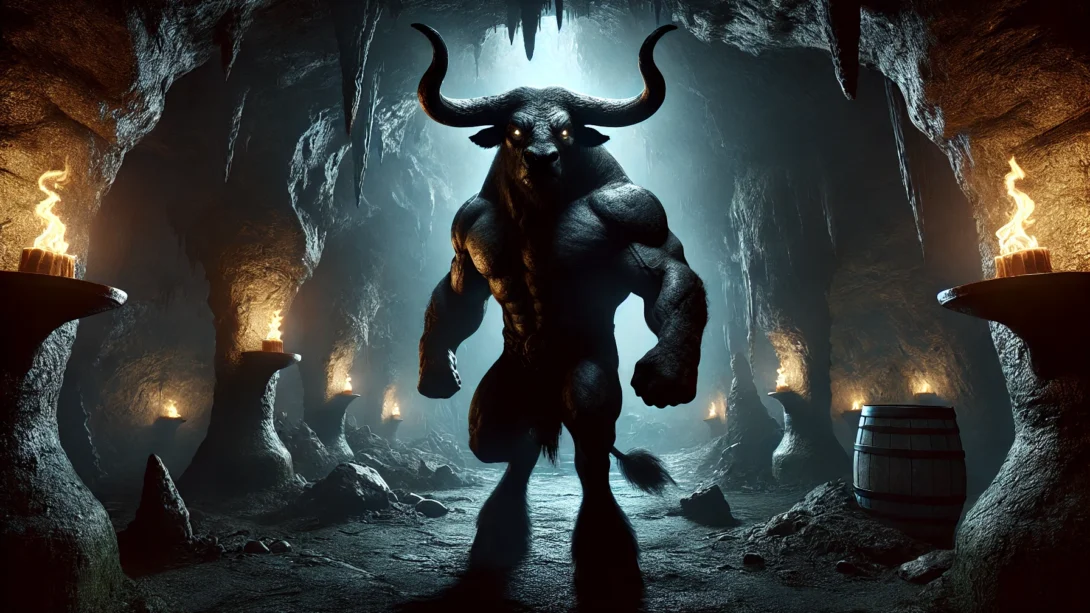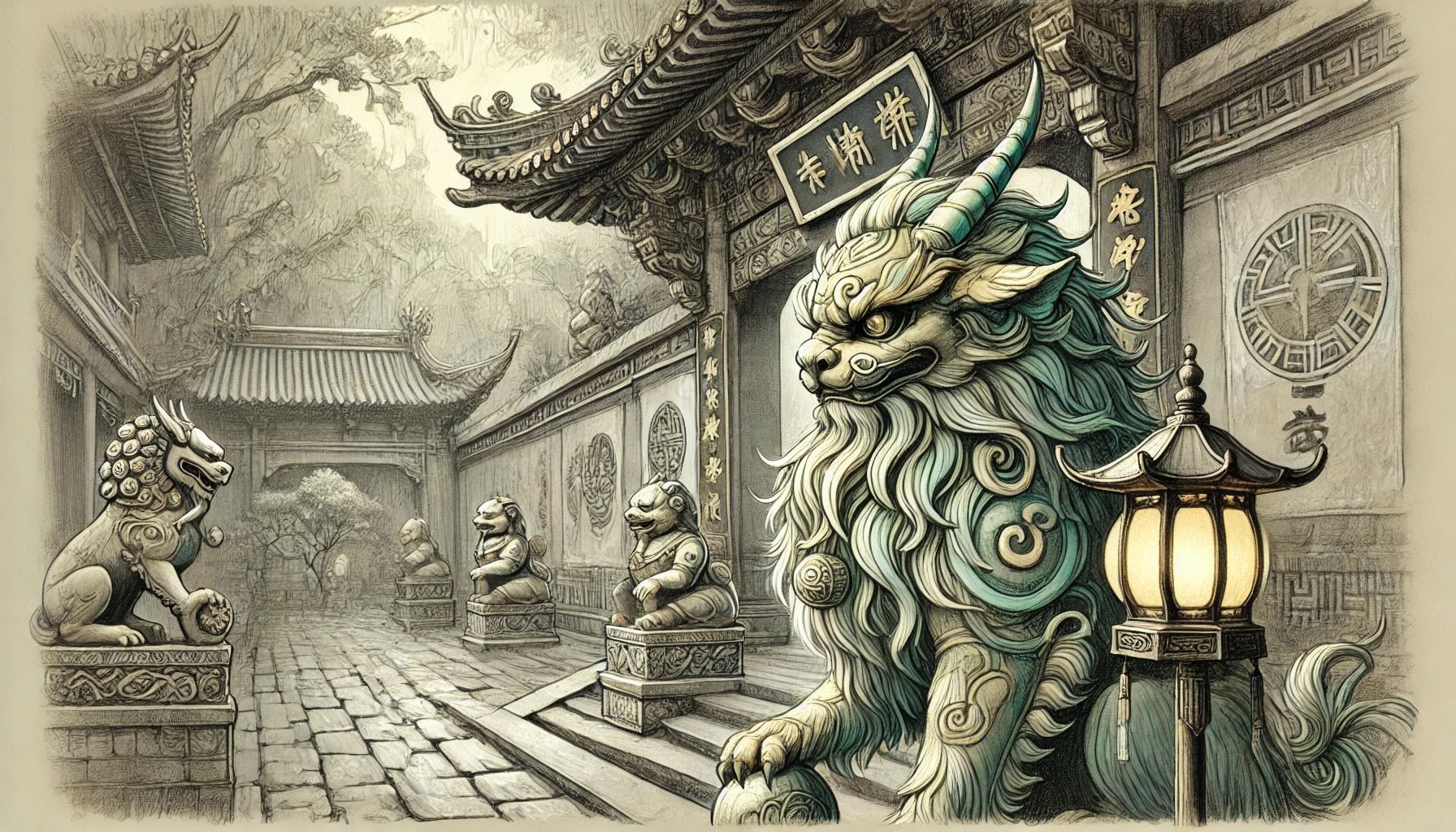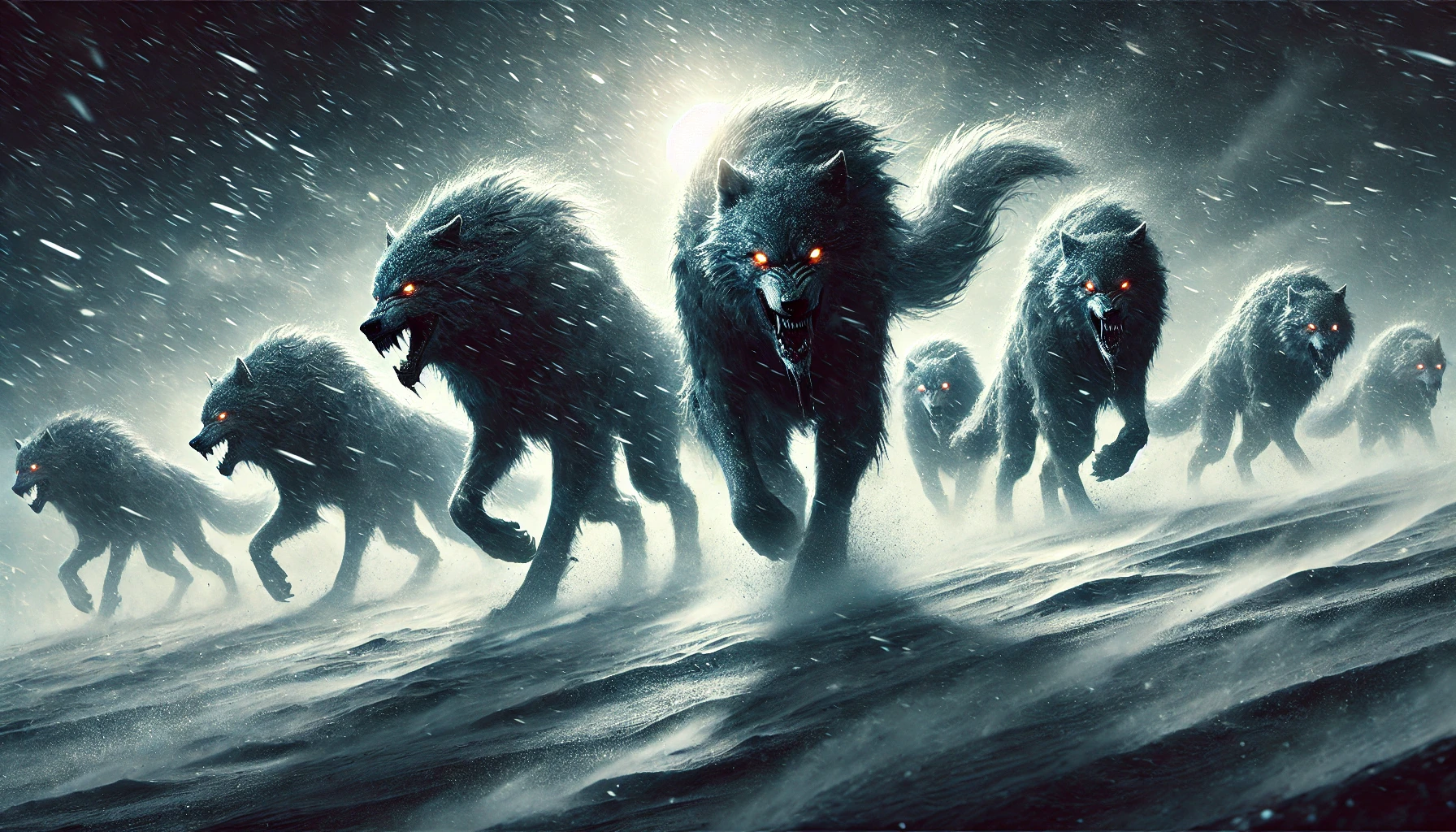Greek Mythology
Greece is a land where the ruins of great cities and rugged landscapes hold echoes of monstrous beings. From serpentine beasts guarding swamps to winged terrors ruling the skies, these creatures are said to haunt labyrinths, seas, and mountain peaks. They test the courage, wit, and strength of all who cross their paths, leaving behind tales of both triumph and terror. Step into their world, and discover the stories of Greece’s most fearsome and iconic monsters.
1. The Minotaur: The Beast of the Labyrinth
Deep within the twisting corridors of Crete’s Labyrinth, the Minotaur prowled, its snorts echoing off damp stone walls. A creature with the body of a man and the head of a bull, it was born from Queen Pasiphaë’s cursed union with a divine bull, a punishment from Poseidon. To hide the shame, King Minos ordered Daedalus to construct an inescapable maze to contain the beast.
Each year, Athens sent sacrificial youths into the Labyrinth until Theseus, guided by a thread from Ariadne, navigated its deadly passages. With cunning and strength, he struck down the Minotaur, ending its reign of terror.
2. Medusa: The Gorgon with a Stony Gaze
The stillness of Medusa’s lair is broken only by the whispers of wind over petrified victims—grim reminders of her cursed power. Once a maiden of unmatched beauty, she was transformed into a Gorgon with writhing snakes for hair after Athena’s curse. Her gaze turned all who met it into stone.
When tasked with retrieving her head, Perseus crept closer, holding his breath as her serpentine locks hissed in the darkness. Using a mirrored shield to avoid her deadly gaze, he decapitated Medusa, and from her blood sprang Pegasus and Chrysaor, adding new legends to her tragic tale.
3. The Hydra: The Multi-Headed Serpent
In the decaying swamps of Lerna, the air thickens with a toxic stench—the unmistakable sign of the Hydra. This serpent’s many heads moved with snake-like precision, each striking with venomous fangs. Worse still, when one head was severed, two more grew in its place, making it a seemingly invincible opponent.
Heracles, tasked with slaying the beast, faced not just its venom but the suffocating fumes of its lair. With the help of his nephew Iolaus, he cauterized the neck stumps with fire to prevent regeneration. Finally, he buried the immortal head under a massive boulder, ensuring the Hydra’s deadly reign was over.
4. The Chimera: A Fiery Menace
Thick smoke and the stench of burning signal the approach of the Chimera, a fire-breathing hybrid with the body of a lion, a goat’s head emerging from its back, and a serpent’s tail. The beast left ash and ruin in its wake, scorching all who dared face it.
Bellerophon, atop the winged horse Pegasus, soared above the Chimera’s reach. As the beast roared flames, he thrust a lead-tipped spear into its throat. The molten metal suffocated the creature, ending its fiery rampage and cementing Bellerophon’s legacy as a hero of unmatched bravery.
5. The Cyclops: One-Eyed Giants
The Cyclopes, one-eyed giants, embodied raw power and primal ferocity. Among them, Polyphemus, a shepherd of wild flocks, became infamous for his encounter with Odysseus.
When Odysseus and his crew were trapped in Polyphemus’s cave, the Cyclops began devouring them one by one. Odysseus devised a daring plan: after blinding Polyphemus with a sharpened stake, he and his men escaped by clinging to the undersides of the giant’s sheep. Polyphemus’s enraged cries echoed through the wilderness, but the clever hero had already secured their freedom.
6. The Sirens: Enchanting Singers
Across jagged shores, the Sirens’ haunting songs drift over the waves, promising forbidden knowledge and untold pleasures. Their melodies lure sailors to their doom, as ships crash on the jagged rocks surrounding their domain.
Odysseus, warned of their danger, ordered his crew to block their ears with beeswax while he tied himself to the mast. Straining against his bonds, he resisted their pull and became one of the few to hear their song and survive. The Sirens remain a deadly force, luring sailors to destruction with their haunting melodies.
7. Scylla and Charybdis: Sea Monsters of the Strait
Navigating the Strait of Messina meant choosing between Scylla, a six-headed beast with snapping jaws, or Charybdis, a massive whirlpool capable of swallowing entire ships. Together, they created a passage of certain peril.
Odysseus, weighing his options, steered closer to Scylla, sacrificing a few sailors to her ravenous heads rather than risking his entire crew in Charybdis’s maw. The screams of the lost echoed across the waves, a grim reminder of the dangers lurking in Greece’s treacherous seas.
8. The Harpies: Winged Messengers of Vengeance
The Harpies, with their birdlike bodies and human faces, descended like storms, their shrieks echoing through the sky. Known for defiling food and spreading despair, they were agents of divine punishment, often tormenting mortals who offended the gods.
When the blind seer Phineus was cursed by Zeus, the Harpies stole his food, leaving him in constant torment. Jason and the Argonauts, aided by the winged Boreads, chased the Harpies away, freeing Phineus in exchange for his guidance. Their stormy descent and razor-sharp claws serve as a constant reminder of the gods’ wrath.
9. Cerberus: The Hound of Hades
The gates of the Underworld are guarded by Cerberus, a monstrous hound with three heads, sharp fangs, and a serpent’s tail. The stench of decay and low, guttural growls warn all who approach that no soul escapes Hades’s domain.
Heracles, in his final labor, descended into the Underworld to capture Cerberus. With immense strength and courage, he subdued the beast without weapons, dragging it to the surface. After presenting Cerberus to King Eurystheus, Heracles returned the hound to its rightful place, completing his most dangerous task.
10. The Sphinx: The Riddler of Thebes
The Sphinx, with the body of a lion, wings of an eagle, and the face of a woman, guarded the gates of Thebes with her deadly riddle: “What walks on four legs in the morning, two at noon, and three in the evening?” Failure to answer meant certain death.
Oedipus, using his wits, solved the riddle with the answer “Man,” referring to the stages of human life. Defeated, the Sphinx threw herself from a cliff, freeing Thebes from her deadly grip.



